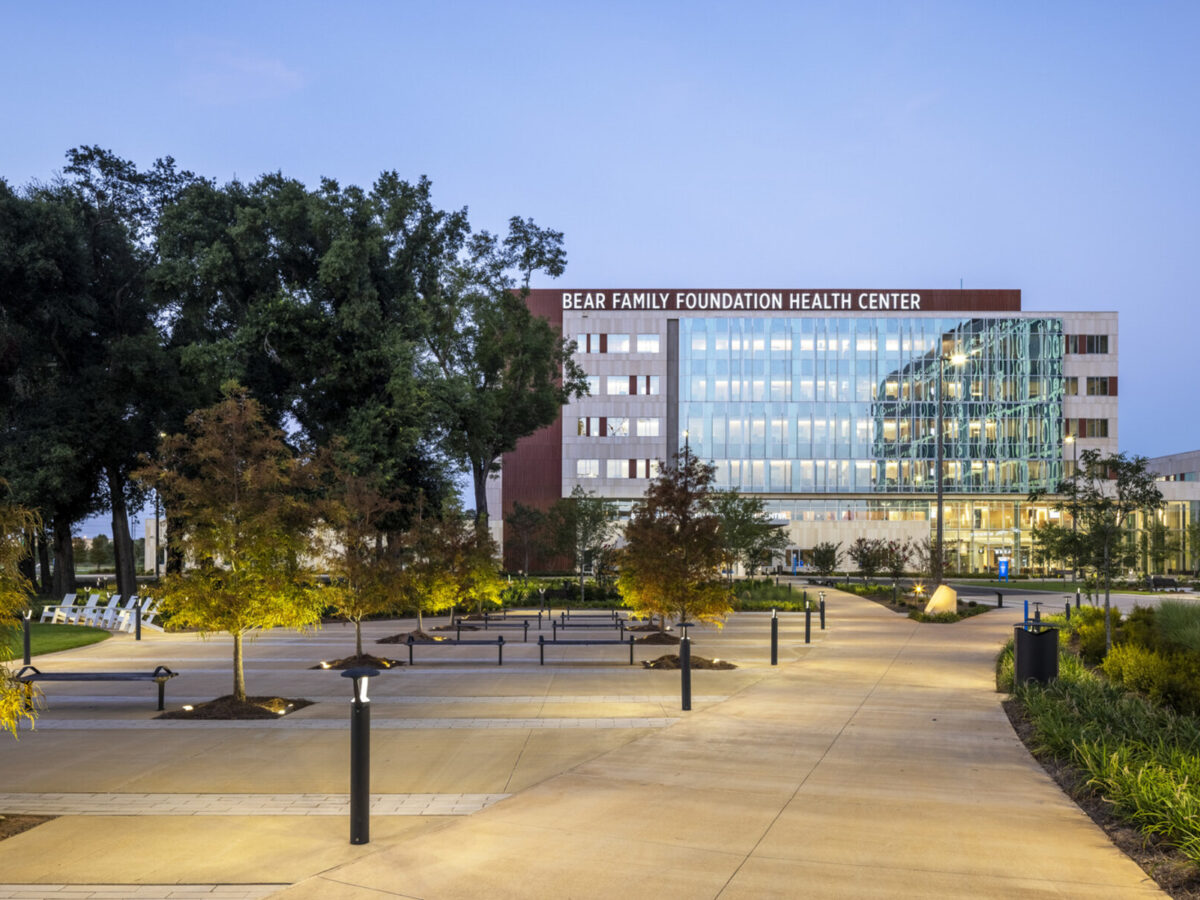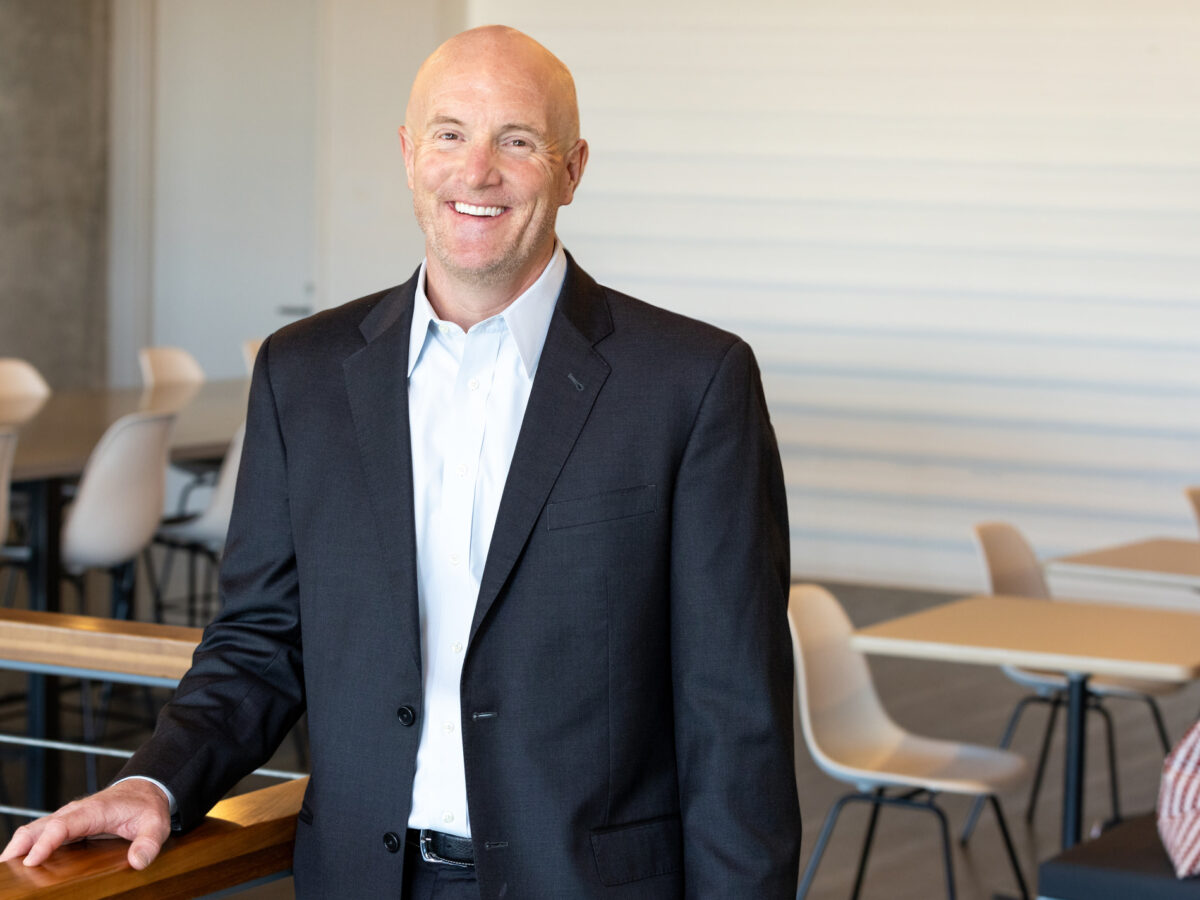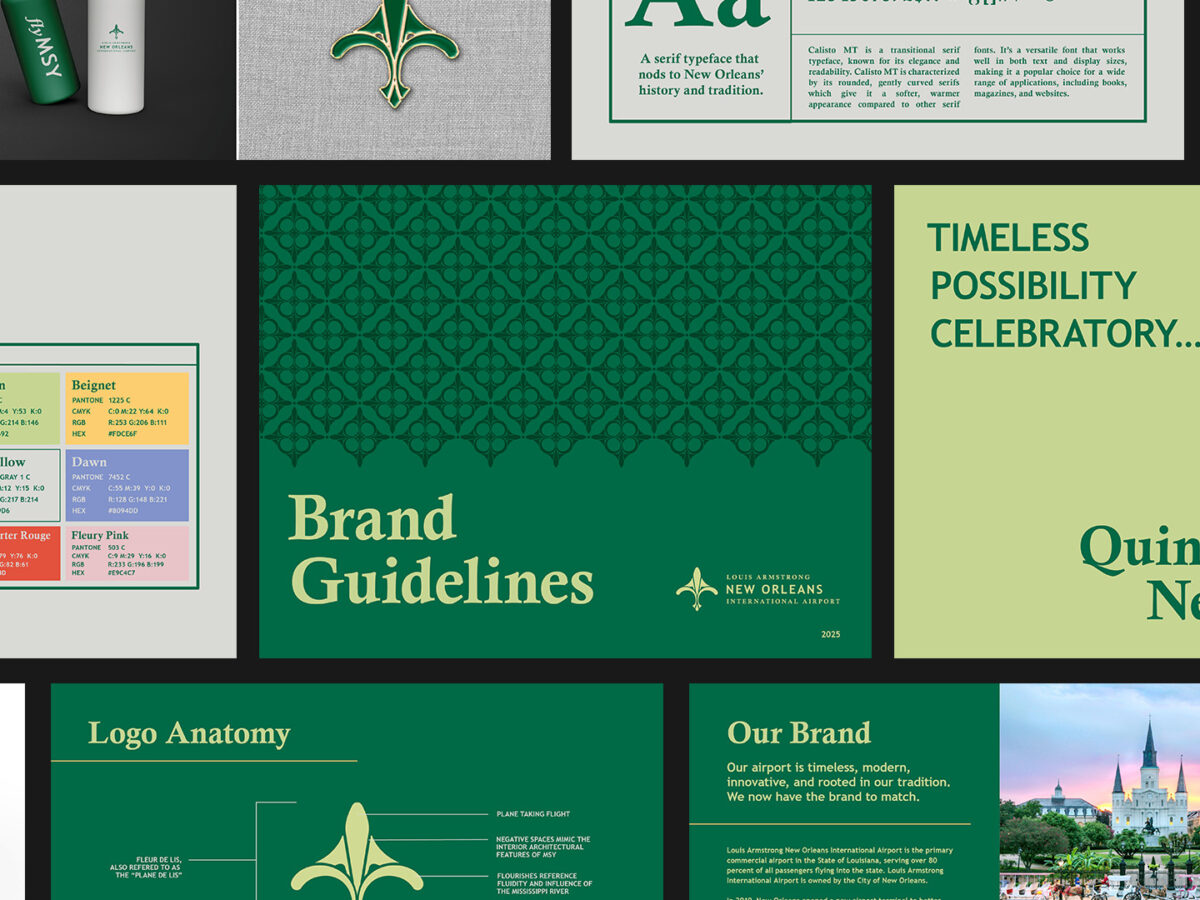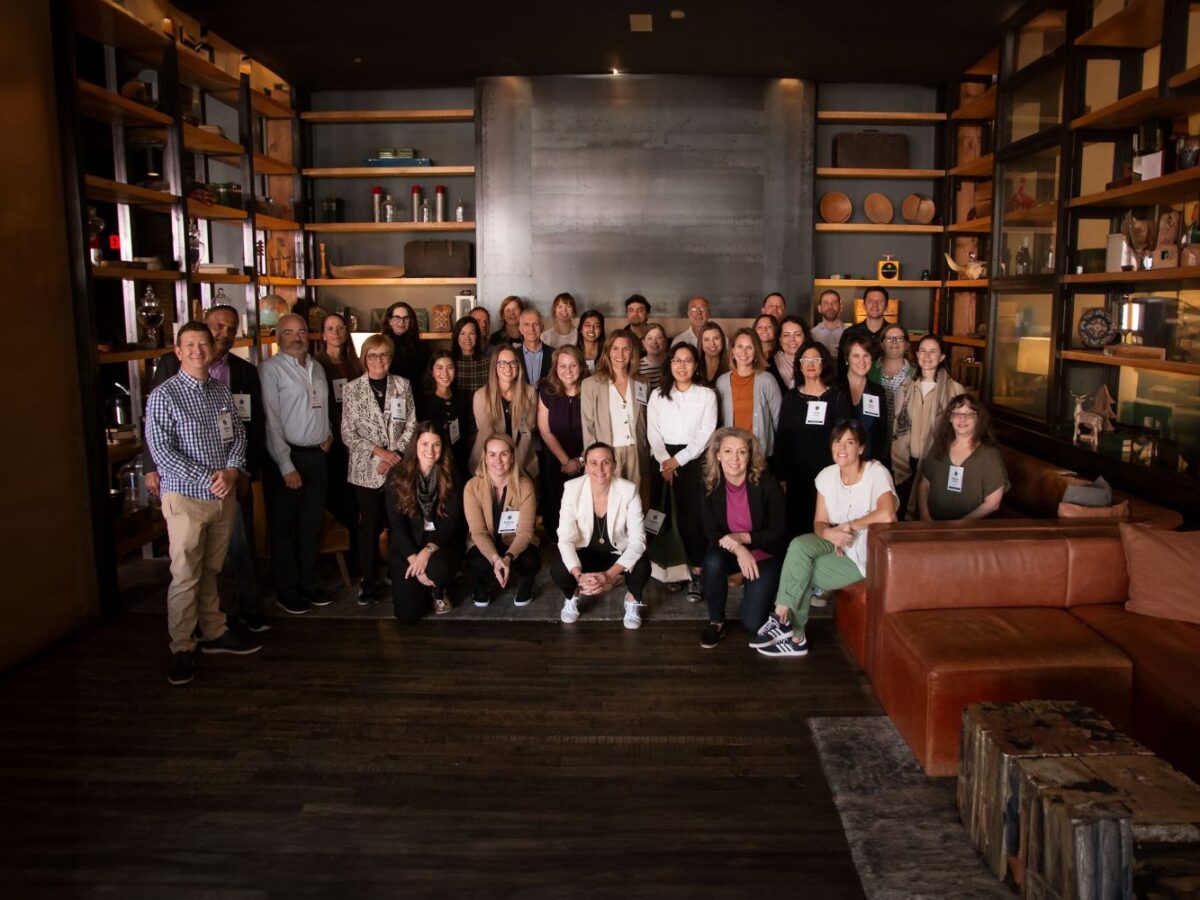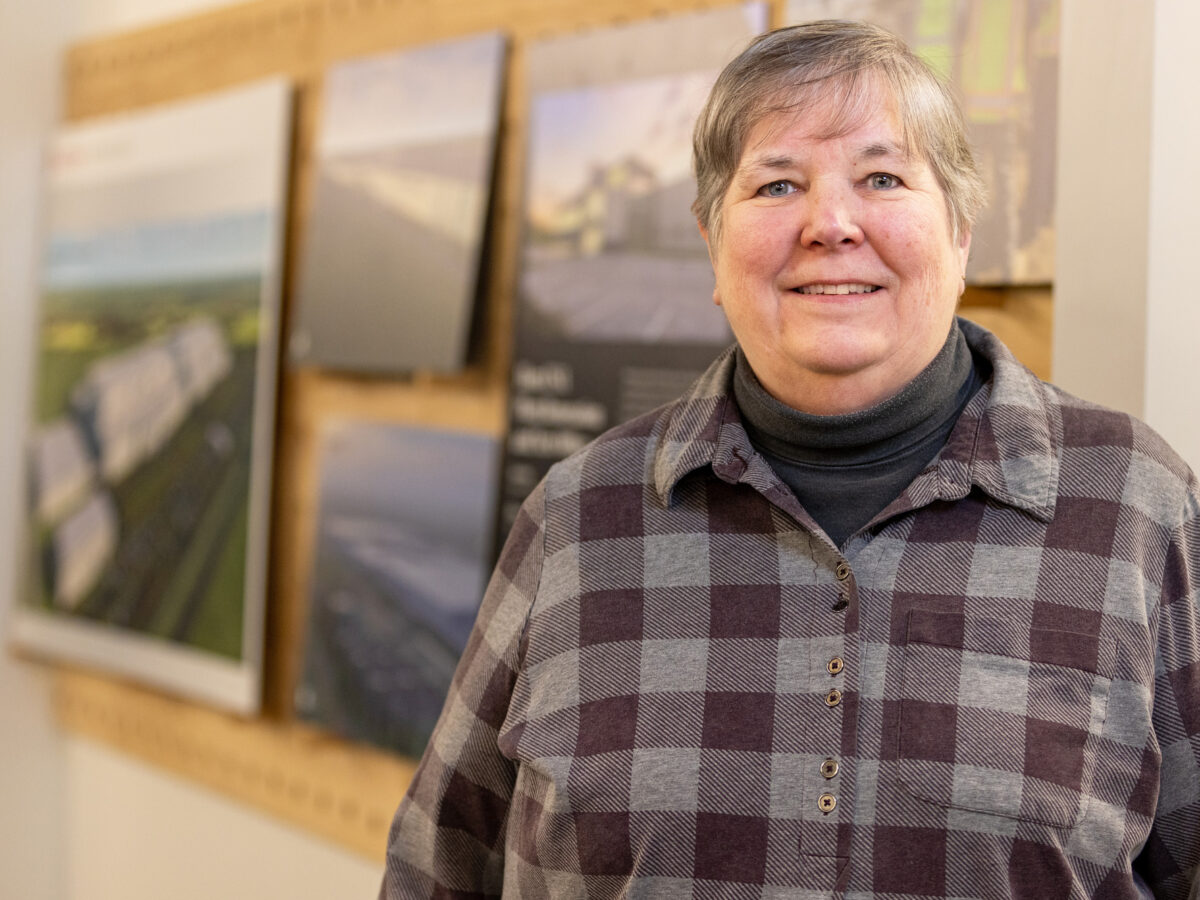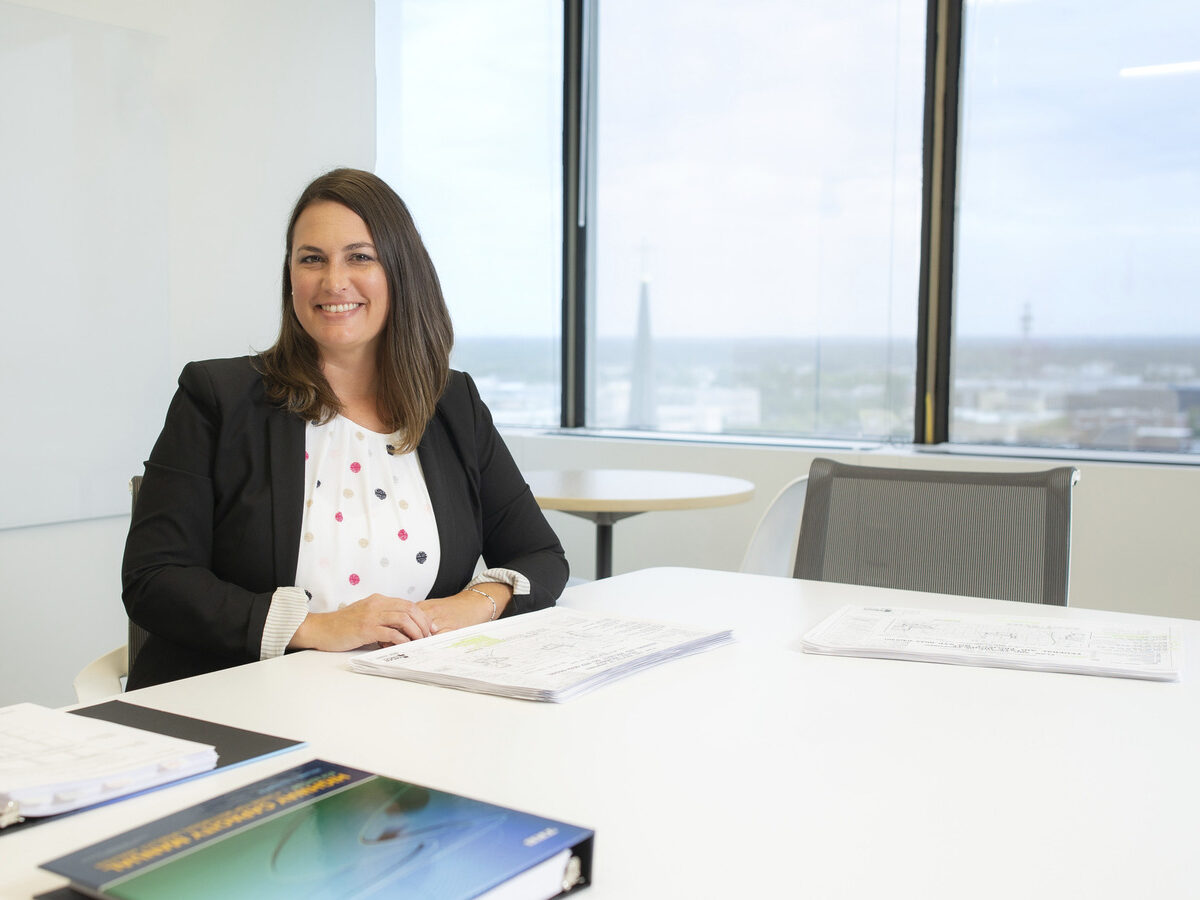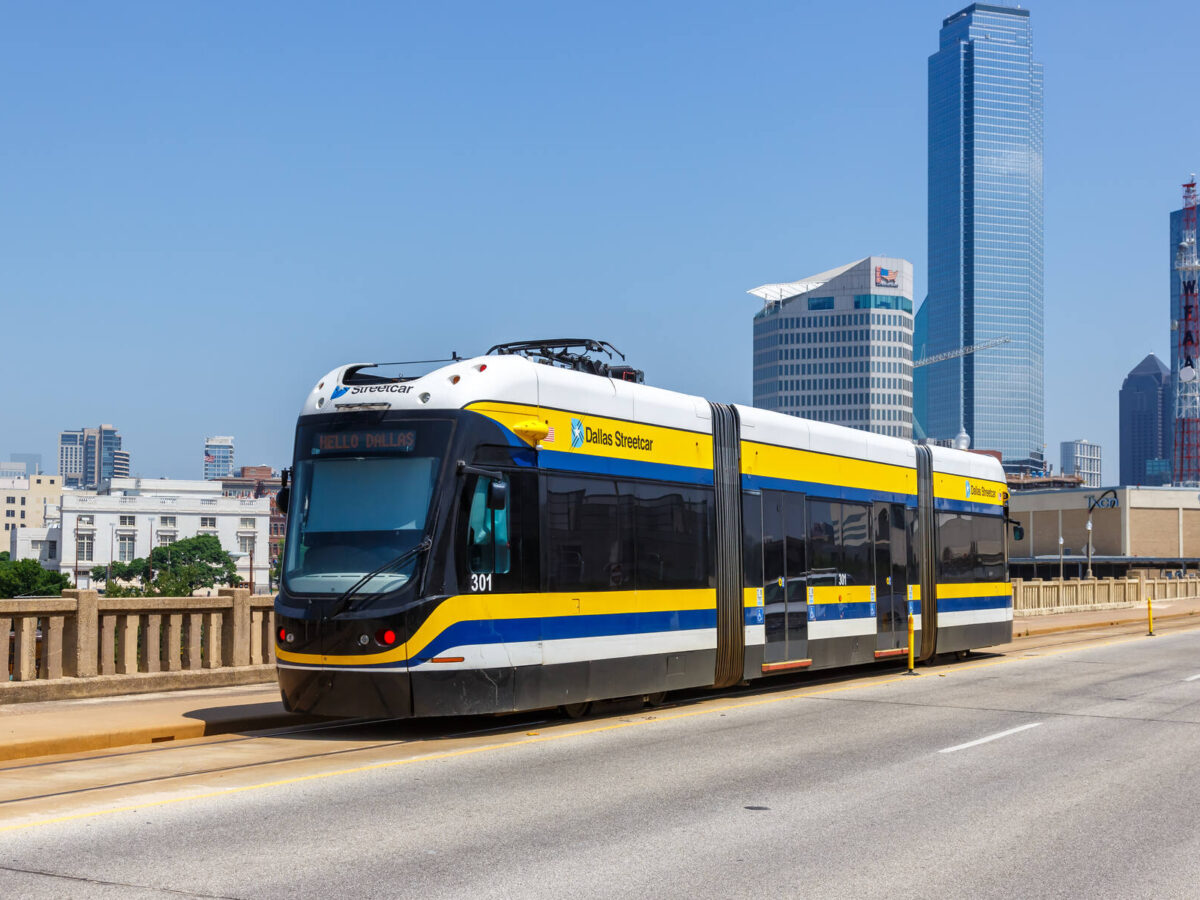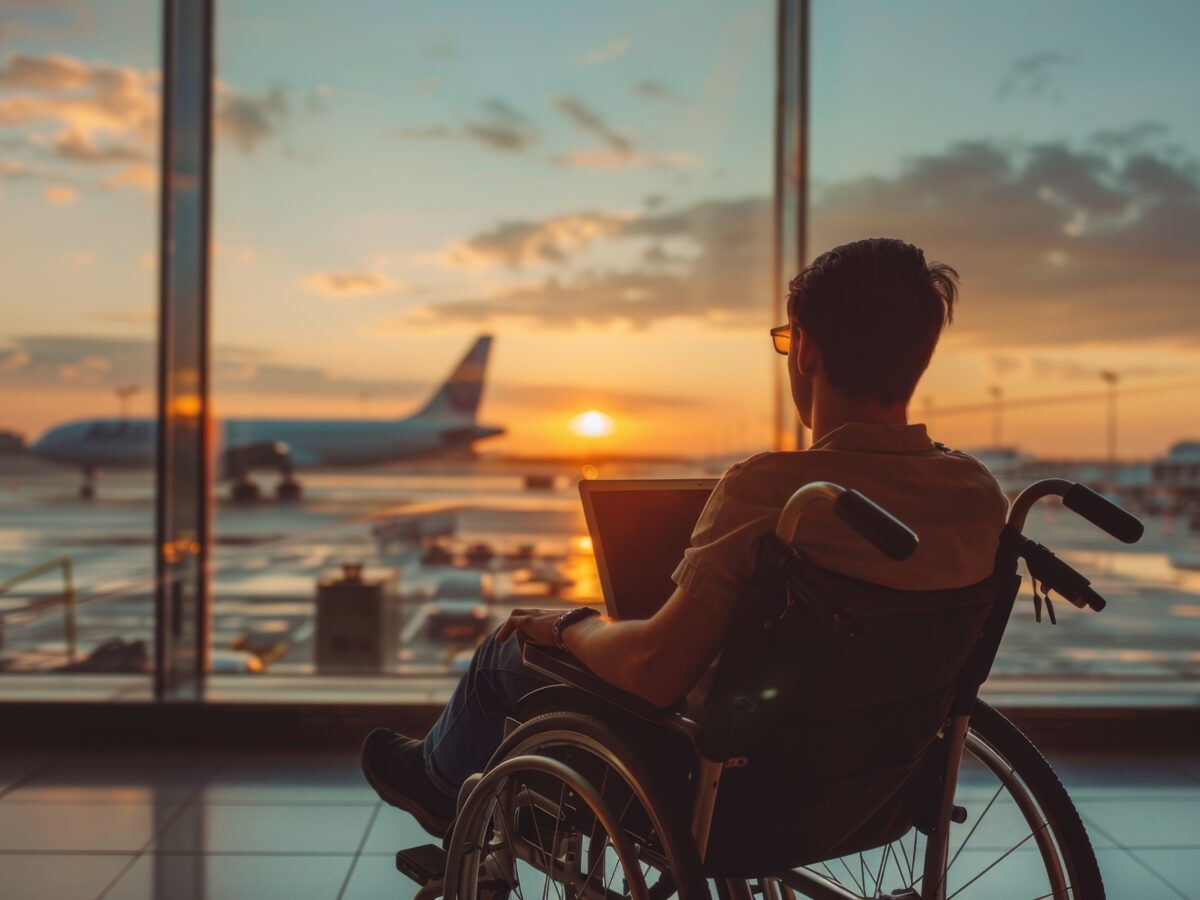Since its founding in 1964, UAB Spain Rehabilitation Center has been nationally recognized as one of the Southeast’s foremost providers of comprehensive rehabilitation care for spinal cord and traumatic brain injuries as well as general rehab services. To expand their reach as leaders at the forefront of care, UAB Medicine sought a state-of-the-art hospital in which they could provide advanced, personalized rehabilitation services that put patients on a path to recovery and lifelong wellness.
Utilizing a planning toolkit that aligns with Gresham Smith’s six value-added design tenets, our team worked with UAB to address the deficiencies in their existing space and determine their vision for the new hospital.
These strategies included a staff-shadowing exercise to gain a better understanding of their current workflow, staff surveys and questionnaires, a photo survey of the existing facility, and a literature review of the current research. User group meetings with staff started at the beginning of the schematic design phase.
By engaging a range of stakeholders so early in the process, we were able to bring invaluable perspectives to the conversation and establish a trusted partnership as we launched the design of their new building.
With the goal of putting the patient journey at the forefront, the design of the facility was equally focused on the physical, mental, emotional and social aspects of patient recovery, as many patients admitted to this program are beginning a long and overwhelming process of recovery from a life-changing trauma.
Along with this holistic approach, other design drivers included patient and staff safety, patient empowerment, integration of technology and workflow efficiencies.
In this blog, I give you a sneak peek at UAB Inpatient Rehabilitation Facility (IRF). The new 11-story hospital will be constructed directly behind the existing facility on the UAB Medicine campus and will provide new and improved amenities, technologies, and treatments that will enhance the overall patient rehab experience.
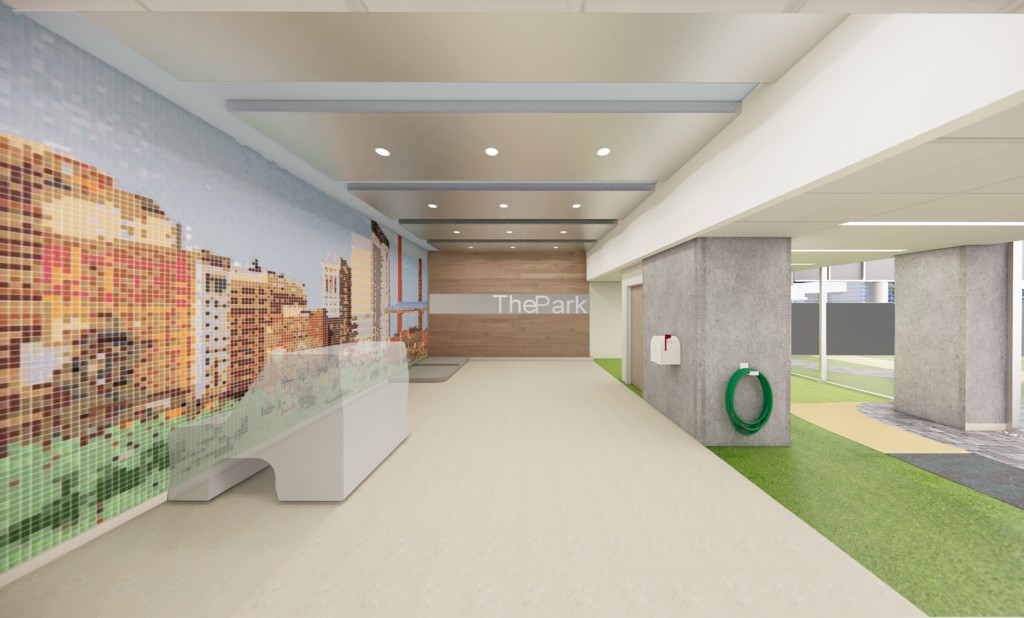
Preparing Patients for the Real World: Indoor/Outdoor Therapy Spaces
Inpatient rehabilitation is often just the beginning of a long journey toward healing and regaining independence. The new facility dedicates space to reacquiring abilities and learning new skills that prepare patients for community reintegration. Patients can safely practice daily activities that we take for granted, like getting in and out of a car or using established paths of travel to get from one place to another.
Occupying both indoor and outdoor space, the ground level of the facility will feature therapy spaces where patients can take wheelchairs for a “test-drive” and master important wheelchair skills that enable them to navigate various inclines and ground materials. Learning new ways to adapt while surrounded by a supportive care team is key to giving patients the confidence to negotiate obstacles they will inevitably encounter when they leave the facility.
Our interior design was developed around the concept of “urban sanctuary.” The glass mosaic mural of the Birmingham skyline was scaled to give patients the feeling they are in the middle of Railroad Park—a popular downtown park and local landmark.
Building upon the recent revitalization of Birmingham, many of the active and social spaces reflect the high-energy, urban vibe of the newly invigorated city. The organization of the building’s interior is complemented by vistas of the city, further integrating the new building and orienting patients to their new environments.
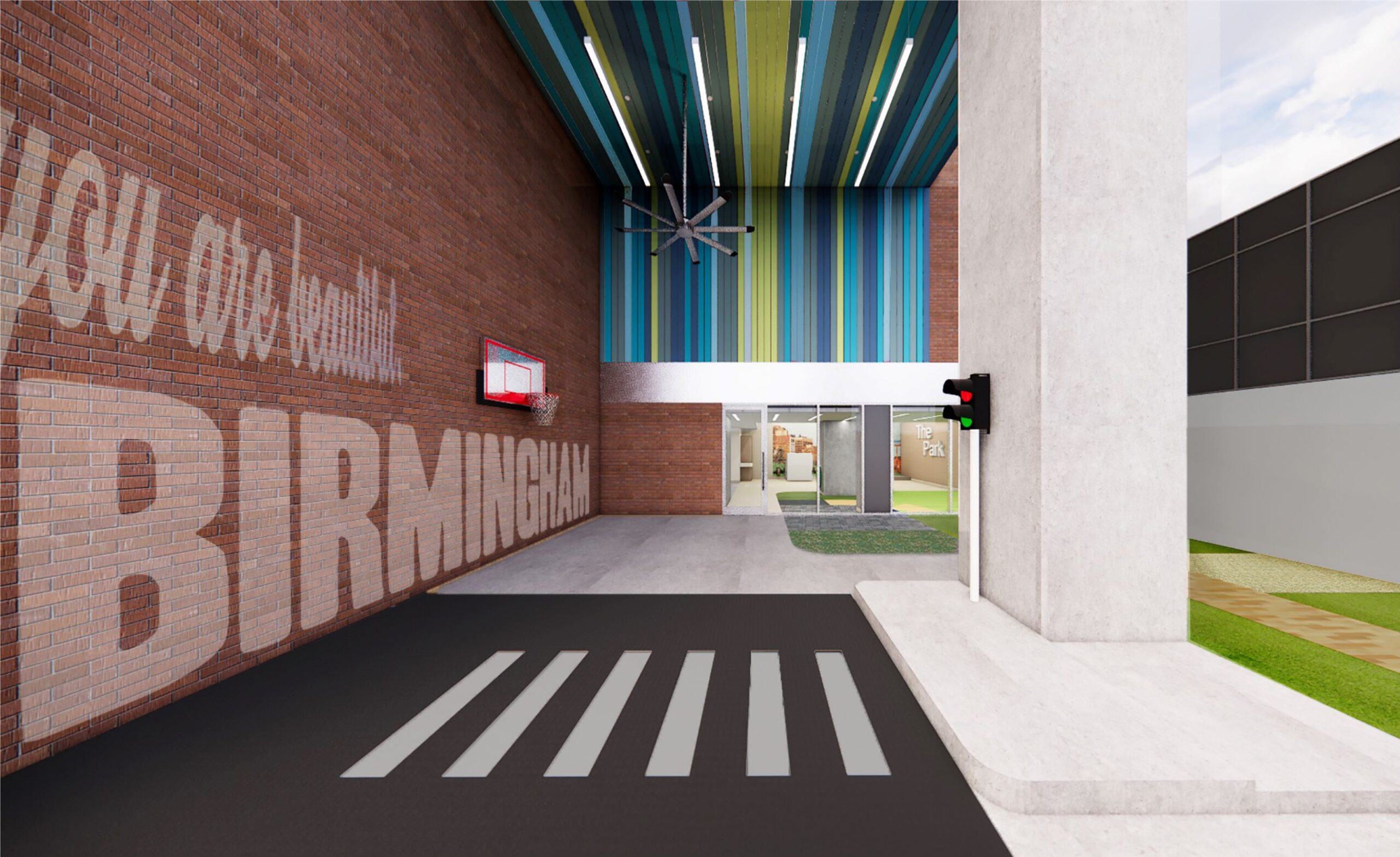
The adjacent outdoor terrain park is designed for patients to practice traversing various ground surfaces and grade changes. A recreation component includes a basketball goal and a putting green, which are also used for higher-level balance therapy.
In this streetscape simulation, patients will practice navigating the urban terrain and surfaces they might encounter in the city, including a crosswalk, curb, ramp and sidewalk. The ground floor location makes use of adjacent street noise—a potential real-world distraction.
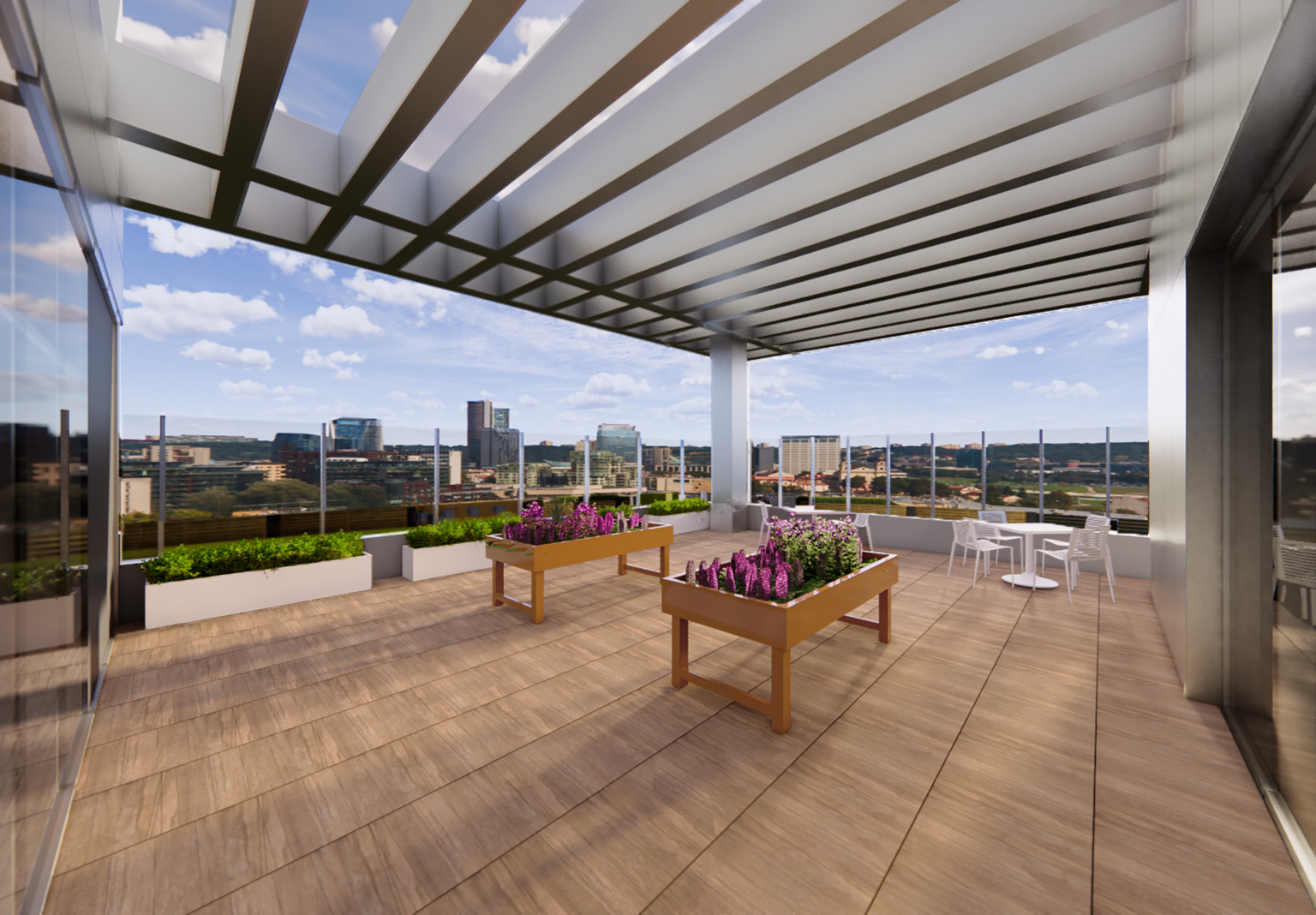
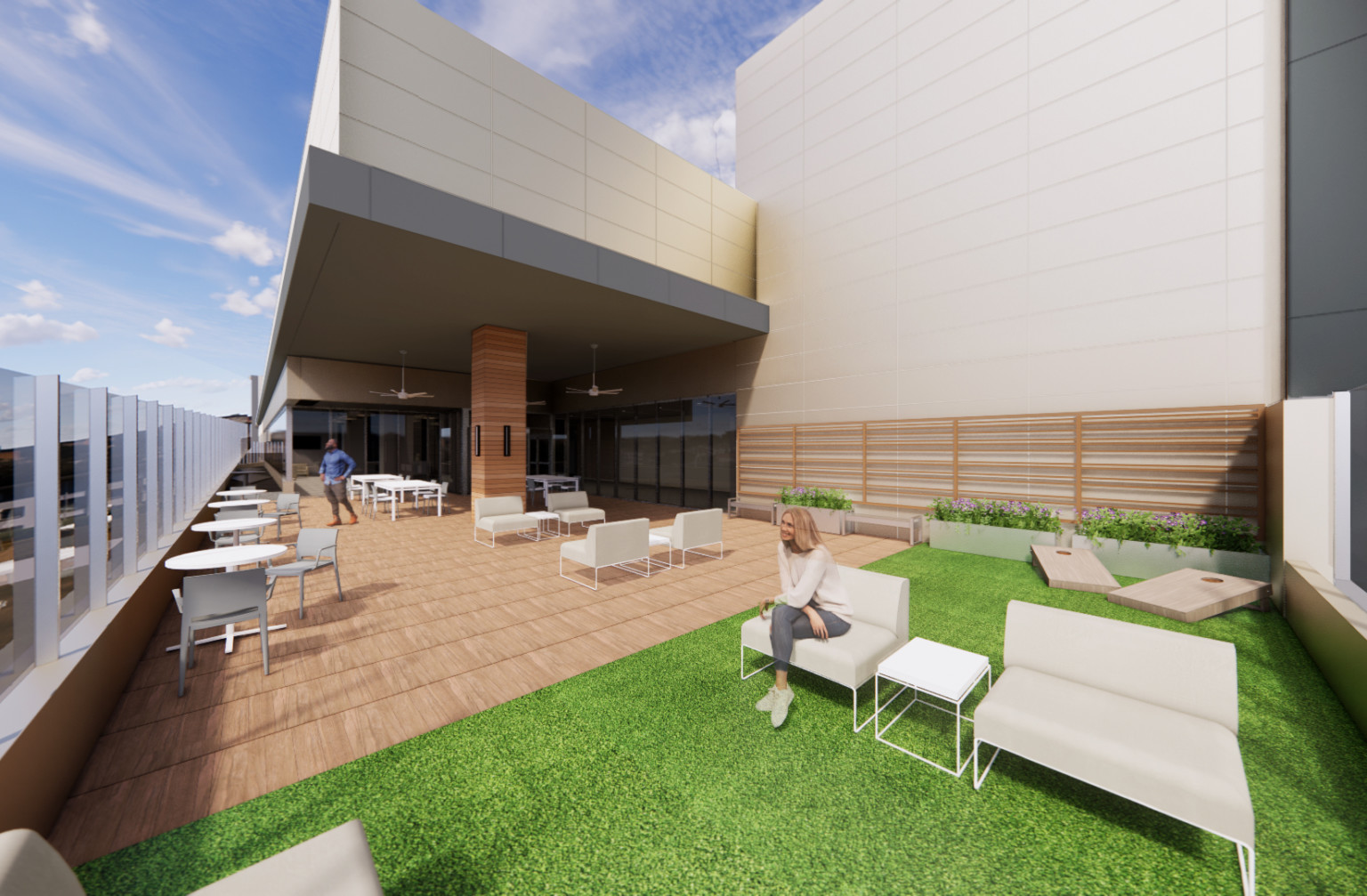
Two outdoor terraces on the top floor offer unique experiences and opportunities for patients, families and friends to participate in recreational therapy and social activities. While this access to the outdoors affords the more obvious benefits of fresh air and non-institutional surroundings, there are multiple layers of recovery being addressed by these terraces.
These spaces are well-suited for activities focused on fine motor skills and sensory therapy, as well as the activities that give meaning to our lives, such as hobbies and fellowship with loved ones.
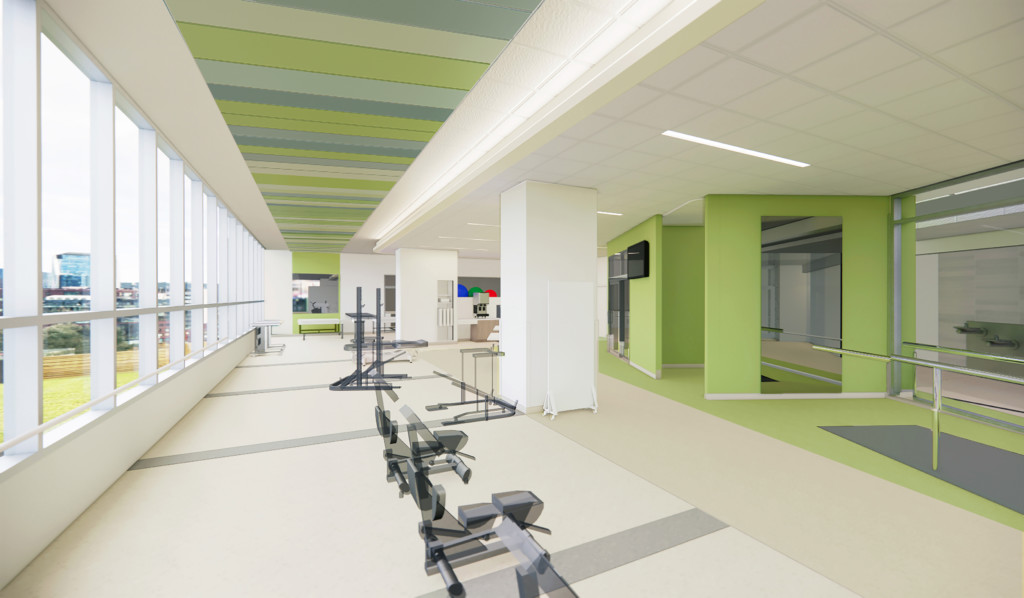
The Heart of the Facility
Located on the eighth, ninth and 10th floors, the specialty-specific therapy gyms represent the heart of the facility. From the interior, extensive glass allows light to flood the point where visitors enter the unit, highlighting the high energy of the gym’s activities and design. This piece of the building is cantilevered, further emphasizing the glass box from the exterior.
UAB’s focus on personalized care shaped the building design in many ways. Each floor features a therapy gym dedicated to the specialty unit occupying the floor. This allows spinal cord, traumatic brain injury and stroke patients to receive specialized care in a gym equipped with technologies specific to their therapy, while also allowing them to receive individualized care from therapists who are trained to address their unique challenges.
The open design of the therapy gyms creates an opportunity for interactions that helps patients with similar conditions, struggles and experiences motivate one another, positively impacting their self-esteem and confidence, and offering hope along their journey to recovery.
Each floor also includes an Activities of Daily Living (ADL) Suite within the specialty therapy unit—each one uniquely furnished with different equipment to simulate conditions a patient may encounter in their home kitchen, bedroom and bathroom. The therapist work area is strategically located to support the collaboration with nursing staff and other care providers, essential to the multidisciplinary care model.
Lift-assisted gait training will occur along the full length of the exterior wall in all therapy gyms. The simple floor pattern indicates predetermined distances, allowing therapists to passively observe and track a patient’s progress. A colorful ceiling element draws the patients’ focus upward and encourages forward movement.
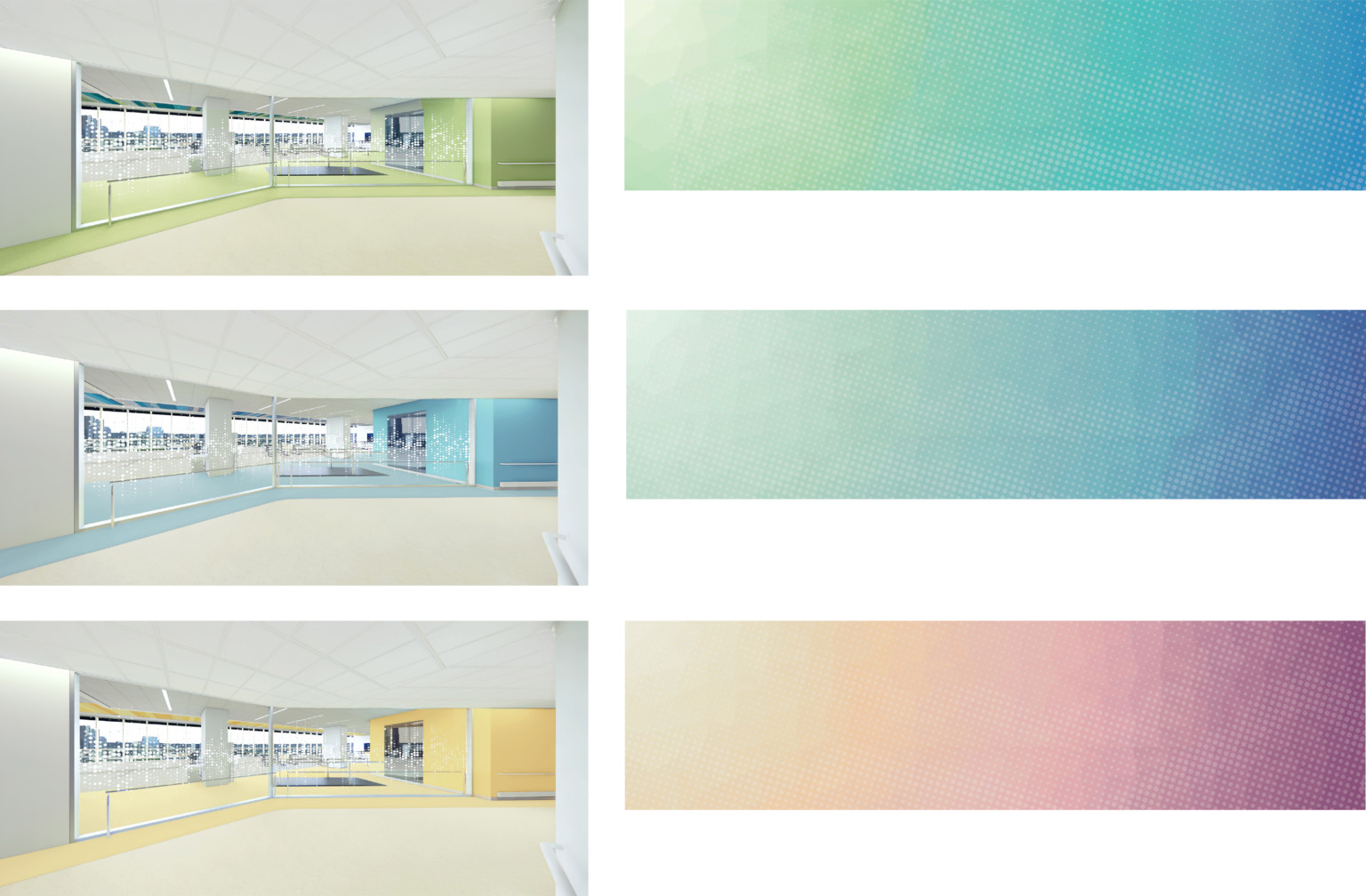
The Importance of Color
The color palettes for the facility transition from high-energy floor identifier colors, as seen at the unit entry and therapy gyms, to a more soothing side of the palette as used in the patient corridors, nurse stations and day rooms. The wall pattern created throughout the patient corridors emulates the natural rising and setting of the sun over Birmingham’s Red Mountain.
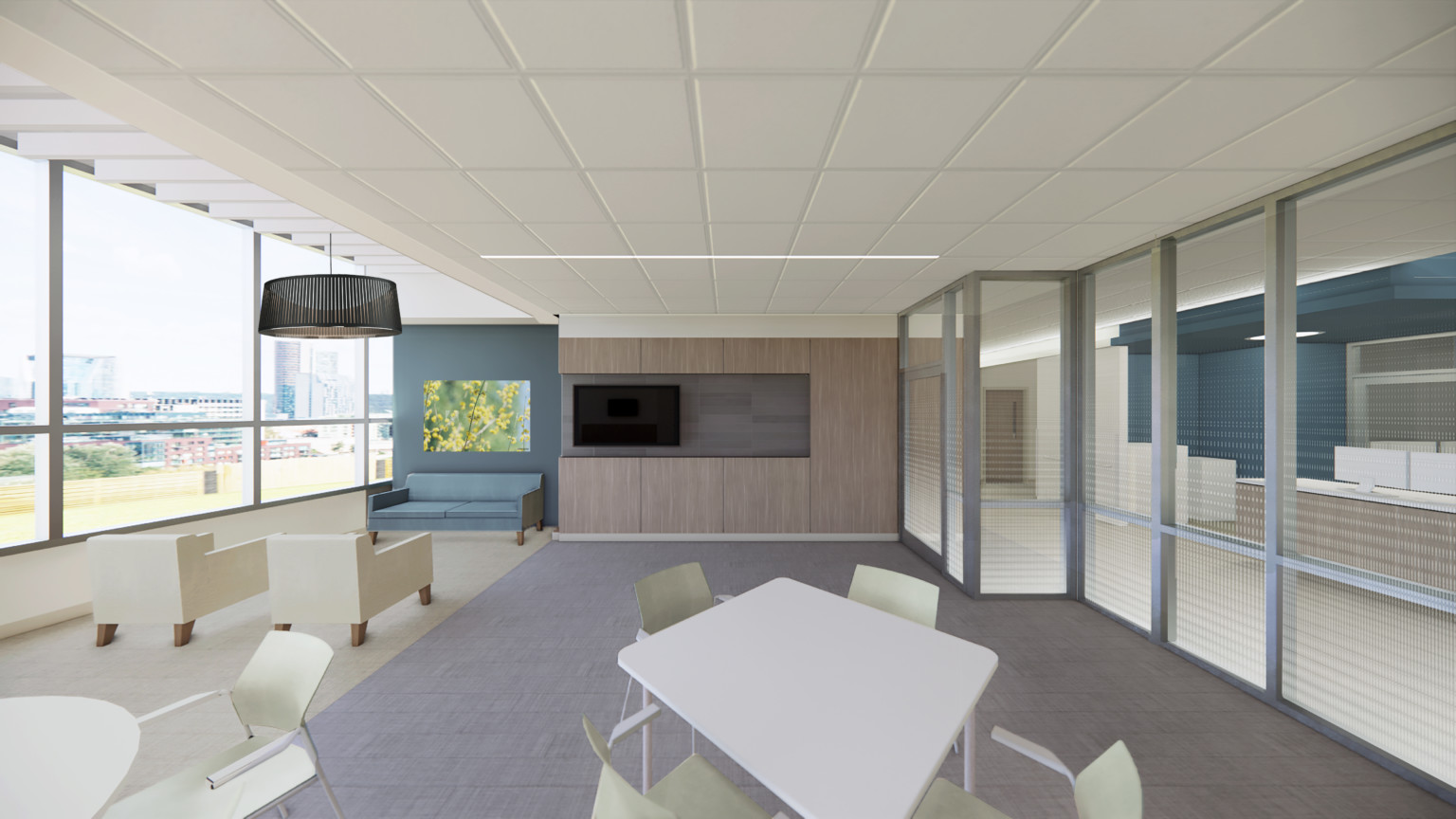
A Place to Get Away
Daily group therapy, dining and gaming are just a few of the many ways that patients and families will occupy the day rooms. These spaces have been designed to accommodate a range of scheduled activities and facilitate natural social interactions. The warm, hospitality-inspired interior encourages patients and family members to spend their downtime outside of the patient room. This can be especially helpful in combating depression that can accompany many of the traumatic events and conditions that bring patients to the IRF.
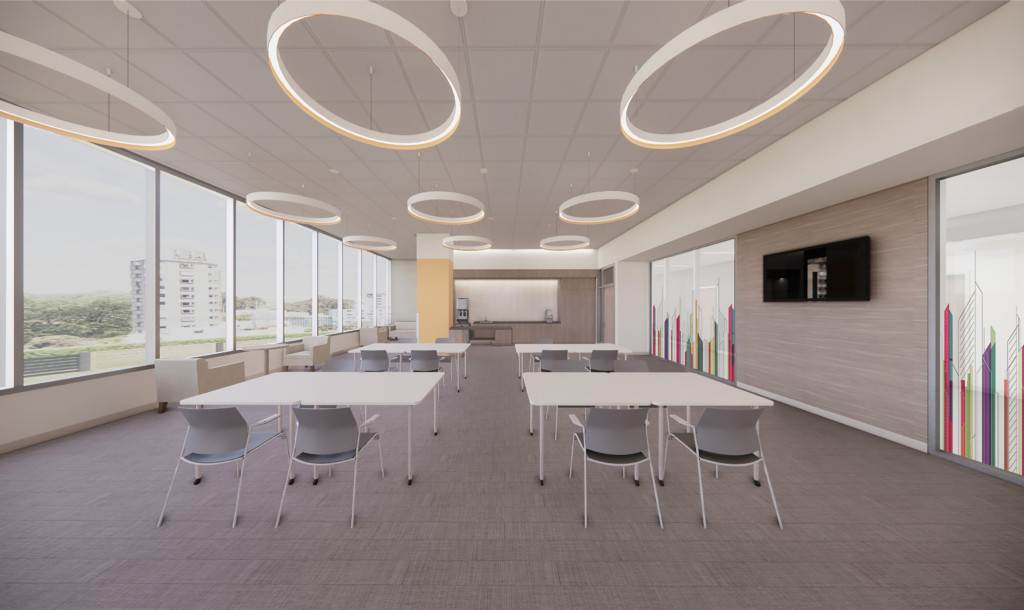
A Room with a View
Additional Day Rooms and activity spaces offer an engaging setting for alternative therapies, such as cooking classes, art therapy, nutrition, wellness classes and more. Maximizing flexibility allows the curriculum to evolve and be tailored to patients’ interests. A smaller activity room and horticulture therapy garden are located in a quieter corner of the building, away from the potentially overstimulating group spaces.
Located on the 11th floor of the hospital, these rooms will offer sweeping views of downtown Birmingham, including the iconic Vulcan statue that overlooks Birmingham from atop Red Mountain.
Slated to open in 2025, UAB IRF is anything but your typical rehab facility. Our design supports UAB Medicine in helping patients regain as much mobility and independence as possible so they can get back to living their lives.

